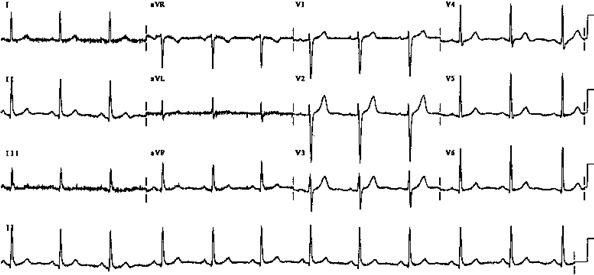Article
Pacemakers and AICDs Nomenclature and Malfunction
Knowing a few fundamental concepts on pacemakers and automated implantable cardioverter defibrillators (AICDs) can help a general practitioner gain a better understanding of a patient’s underlying cardiac ailments. The physician will be better suited to treat and care for the patient and give the specialist the most relevant medical data.
Knowing a few fundamental concepts on pacemakers and automated implantable cardioverter defibrillators (AICDs) can help a general practitioner gain a better understanding of a patient’s underlying cardiac ailments. The physician will be better suited to treat and care for the patient and give the specialist the most relevant medical data. Collectively, the medical team can develop a superior treatment approach.
In this 3-part article, we describe the basics of pacemakers and AICDs. The first part (“Pacemakers and AICDs: The ABCs”) discussed distinguishing between pacemakers and AICDs. Here we address pacemaker nomenclature and device function, malfunction, and pseudomalfunction. Part 3 will cover interrogation reports and interpretation of EKGs.
Pacemaker Nomenclature and Device Function
Pacemakers have 5 positions:
- Position 1 reflects the chamber: A, atrium; V, ventricle D; dual, atrium and ventricle.
- Position 2, the chamber sensed position, is the first position with the addition of option O, the absence of sensing. In this position, the device paces automatically at a specific rate, ignoring the fixed rhythm.
- Position 3 is how the pacemaker responds to a sensed occurrence: I, inhibitor of the output sequence; T, the output pulse generated in anticipation of an event; D, a dual chamber system in which an atrial output is inhibited and ventricular output is triggered by atrial sensing.1,2 A modifiable delay between the atrial generation and ventricular propagation is meant to reflect the normal PR interval. A native ventricular signal sensed by the ventricular lead during this programmed delayed can inhibit the ventricular propagation of the pacer; O reflects no response/disabled.
- Position 4 is the rate of inflection/modulation/reaction: R adjusts the sensed programmed heart rate to the patient’s activity; O, immobilized/disabled, frequently omitted.
- Position 5, infrequently used, identifies the location or deficiency of pacing in multiple chambers; both atria, ventricles, or more than 1 stimulus in a single chamber.3
Device Malfunction and Pseudomalfunction
Most of the functions can be assessed with only a 12-lead EKG. When any patient who has a device is seen, the EKG is crucial. For example, the following EKG was taken from a patient who had a dual chamber pacemaker:

Figure 1. EKG in normal sinus rhythm without abnormality.Figure 1. EKG in normal sinus rhythm without abnormality.
Figure 1 shows normal sinus rhythm without any obvious abnormality. Because there are no pacing spikes or evidence of device activity, we can infer that the sensing of the atrial lead and that of the ventricular lead are intact.
Contrast this tracing with Figure 2 from a patient with a ventricular inhibited (VVI) system.

Figure 2. EKG in patient with a VVI system.Figure 2. EKG in patient with a VVI system.
Here we see pacing spikes followed by QRS complexes. However, the beat at the green arrow shows a paced complex that is immediately preceded by an intrinsic depolarization. If the device is sensing appropriately, it should have inhibited pacing. The likely conclusion here is undersensing. This situation can be the result of lead malfunction and requires electrophysiology consultation.
Next: More Malfunction and Pseudomalfunction, Interrogation Reports, Interpretation of EKGs
References
- Schoenfeld MH. Contemporary pacemaker and defibrillator device therapy challenges confronting the general cardiologist. Circulation. 2007;115:638-653.
- Lamas GA, Ellenbogen KA. Evidence base for pacemaker mode selection: from physiology to randomized trials. Circulation. 2004;109:443-451.
- Tom V, Allen H, Stella M. Pacemakers, AICDs. Pacemakers, AICDs. 4 Apr. 2015.





